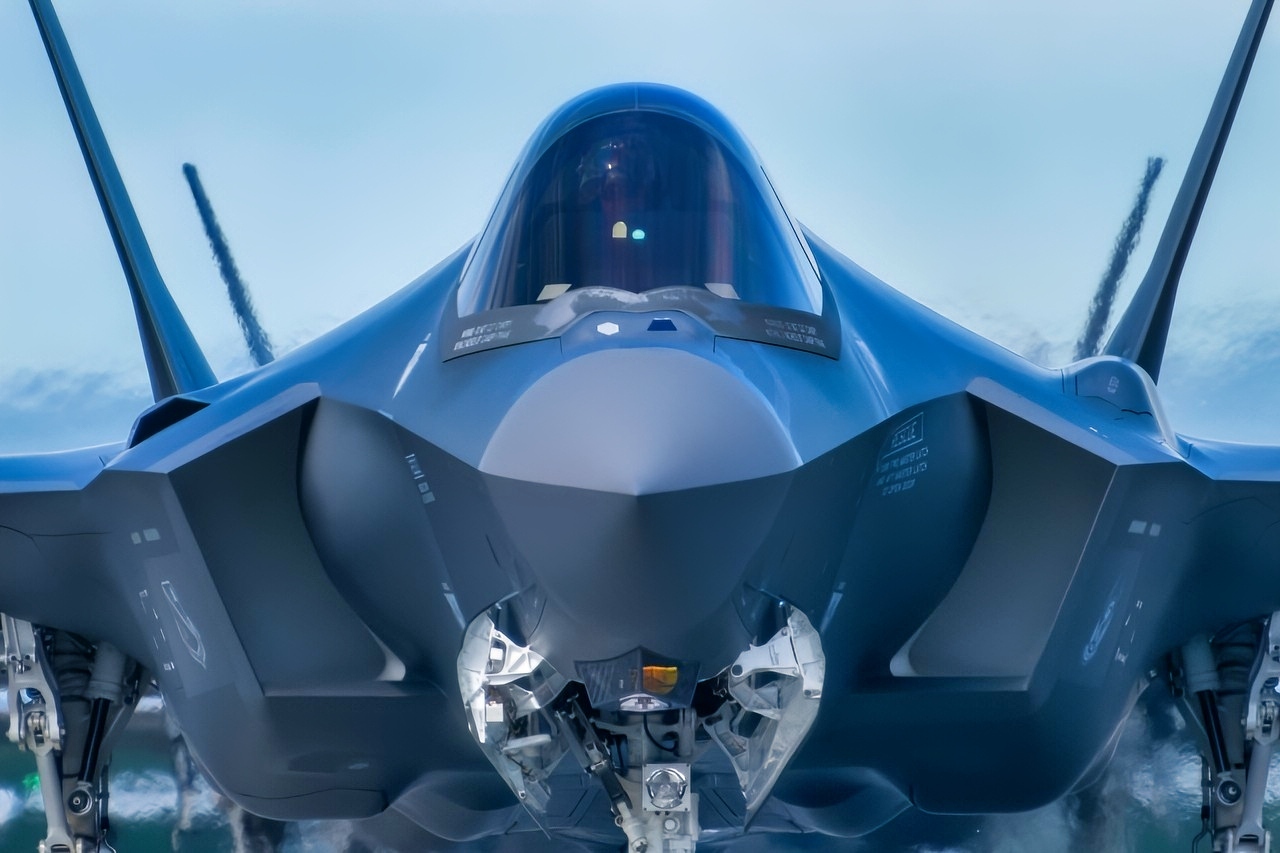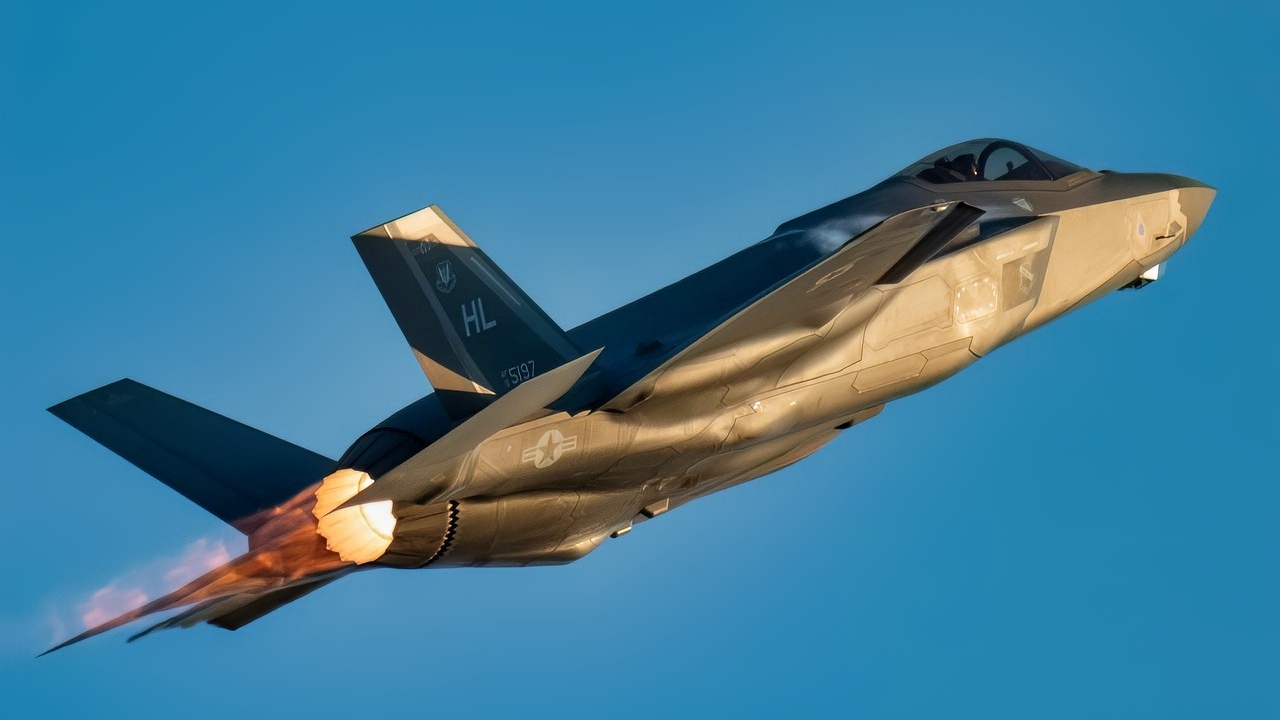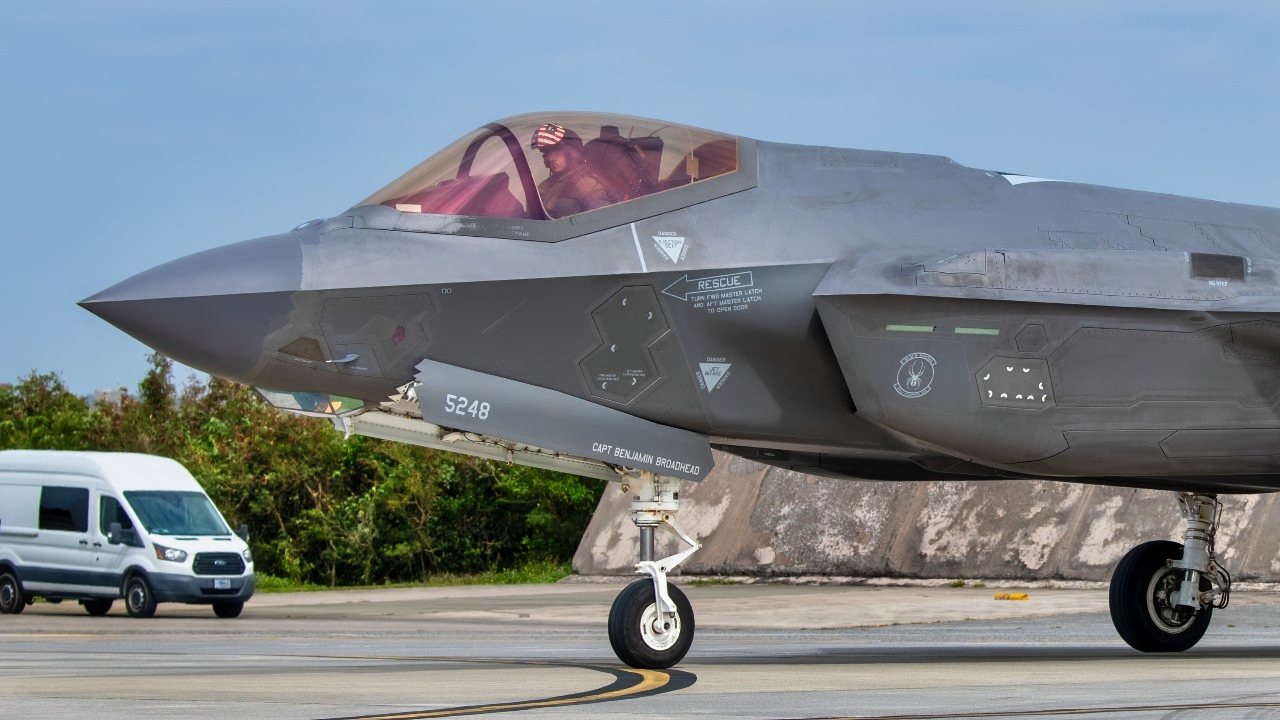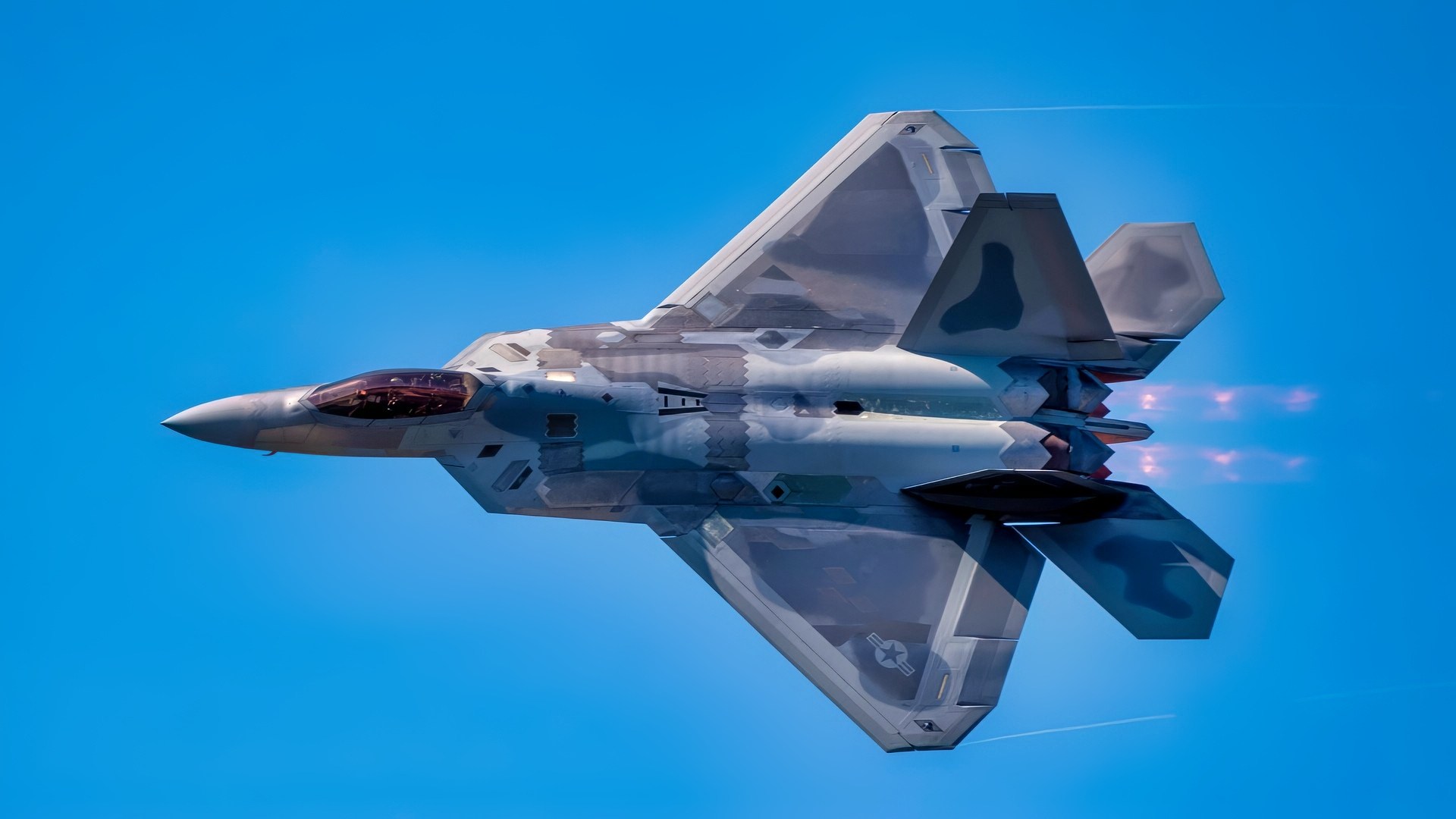Key Points and Summary – Imagine the U.S. Air Force with 750 F-22s. Air superiority would be overwhelming, but the force would be poorer, less interoperable, and more tanker-dependent.
-The Raptor excels at killing enemy aircraft, not at the networking, ISR, electronic warfare, strike flexibility, and allied commonality the F-35 brings.

U.S. Air Force aircraft participate in a capabilities demonstration in honor of the U.S. Air Force’s 75th Anniversary at Eielson Air Force Base, Alaska, Aug. 12, 2022. Aircraft, including F-35A Lightning II, F-16 Fighting Falcon and F-22 Raptor aircraft, participated in the 75-fighter jet formation. (U.S. Air Force photo by Tech. Sgt. Timothy Moore)

A U.S. Air Force F-22 Raptor assigned to the Air Force F-22 Demonstration Team, Air Combat Command, performs aerial maneuvers during the 2025 Marine Corps Base Hawaii Kaneohe Bay Air Show, Aug. 9, 2025. The Kaneohe Bay Air Show provides an opportunity to showcase the aircraft, equipment and capabilities of the armed forces in the Indo-Pacific region to the local community. The air show, which contained aerial performances, static displays, demonstrations and vendors, was designed to celebrate MCBH’s longstanding relationship with the local community. (U.S. Marine Corps photo by Lance Cpl. Blake Gonter)
-A giant F-22 fleet would crowd out investments in distributed sensors, multirole platforms, and sixth-gen teaming, and strain basing and logistics, especially across the Indo-Pacific’s ranges.
-Truncating F-22 and banning exports arguably enabled F-35’s coalition scale and NGAD’s F-47 vision.
-The lesson: dominance matters, but balance and affordability shape real combat power in practice.
Alternative Realities: The F-22 Raptor Program – 750 Stealth Fighter?
At a time when the United States had no peer adversaries, lawmakers cut the Raptor program short, ultimately providing funding for a sub-200 plane fleet, rather than the 750 the U.S. Air Force had initially anticipated. What if that had never happened?
If the United States Air Force had 750 F-22 Raptors, instead of the approximately 187 that it ultimately received into service, America’s flying branch would be a much more air-dominant-centric force. It would be exceptional at winning air battles and controlling contested enemy air space — but the Air Force overall would be poorer and less capable despite it.
Interoperability with allies and coalition partners, distributed strike operations, electronic warfare, intelligence, surveillance, and reconnaissance, as well as the suppression of enemy air defenses, would all suffer, as there are tasks for which the F-22 was never intended.
Advances in Soviet Aerospace Technology and the Advanced Tactical Fighter Competition
A product of the Advanced Tactical Fighter competition run by the U.S. Air Force, the ATF program sought a replacement for the F-15 Eagle to counter recent Soviet aerospace advancements. In particular, the Air Force was aware that several pressing Soviet threats had materialized: first, the Su-27 and MiG-29, both advanced fourth-generation fighters noted for their extreme maneuverability.
Rumors of a more advanced iteration of the MiG-25, a supersonic interceptor and reconnaissance-capable aircraft — and one of the fastest aircraft ever put into military service — were a great cause for concern.

MiG-31 Flying High Russian Air Force. Image Credit: Creative Commons.
Adding to the dismay within the Air Force was the knowledge of a potent airborne early warning and control (AEW&C) platform, the Soviet Beriev A-50, and its ability to work in conjunction with Soviet air defense to thwart the Air Force’s F-15s and F-16s.
Together, these factors, taken into account, cast doubt on the efficacy of low-level penetration of Soviet air defenses and the shocking prospect that Soviet aerospace technology may have surpassed that of the United States.
What the United States Air Force Would Gain
With a fleet of 750 F-22 Raptors, establishing air dominance over contested skies — and, perhaps just as importantly — maintaining that dominance would become a significantly more achievable task for the U.S. Air Force.
A force of F-22s over four times the size of where it currently stands could generate significantly more sorties, keeping large numbers of the stealthy air superiority fighters deployed forward to maintain superiority against peer or near-peer air forces while also absorbing attrition against that force.
Holding contested airspace — actually holding it — would facilitate later follow-on air operations, particularly those where air dominance is a prerequisite, including intelligence, surveillance, reconnaissance, strike missions, and others.
Although times and technologies change, the F-22 remains the best air superiority platform in existence today. Put simply, more Raptors means the odds of winning in air-to-air combat situations increase.
What the United States Air Force Would Lose
But, even assuming a 750-plus strong F-22 Raptor fleet existed today, there would still very much be an acute need for the unique abilities that platforms like the F-35 Lightning II, F-47, and other airborne assets can provide and operational applications that they can fill that the F-22 — despite its not informidable capabilities — simply cannot.
Take the F-35, for example. Each individual F-35 jet is a single node in a wider informational web that includes the myriad sensors on each F-35, all of which contribute to a more complete battlefield picture.

U.S. Air Force Major Kristin “BEO” Wolfe, F-35A Lightning ll Demonstration Team pilot and commander, flies during sunset over Mathers Airport, Calif., Sept. 24th, 2021, at the California Capital Airshow. The team consists of approximately 15 total Airmen to include the pilot and commander, pilot safety officers, superintendent, team chief, maintenance Airmen, aircrew flight equipment specialists, and public affairs personnel. (U.S. Air Force photo by Staff Sgt. Thomas Barley)
As an air dominance, air superiority fighter, the F-22 cannot simply drop in for the F-35 and perform that same vacuuming of battlespace information that the F-35 can — and relay that information onward to other assets in the air and commanders on the ground.
Arguably one of the F-35 program’s greatest strengths, technology aside, it’s the interoperability and burden-sharing it facilitates with allies. American F-35s can use bases, logistics chains, and the technicians and other support personnel of all the countries that operate F-35s. And, all the countries that operate F-35s are friendly to Washington.
The F-22 Raptor fleet was truncated at a time when, following the collapse of the Soviet Union and the end of Cold War-era hostilities, the Pentagon scoured its corridors for cost-saving measures, part of the post-Cold War unipolar moment in which the United States had no peer rival and no immediate application for the vast arsenal of exquisite platforms it had built to best its single nearest rival.
The so-called Obey Amendment is a piece of legislation that, while nearly 30 years old, prohibited the sale of F-22 Raptors abroad, citing concerns that the proliferation of advanced stealth technology around the globe would leave the door open to espionage and the theft of advanced stealth technology to adversaries of the United States. That the Raptor cannot be exported is incontrovertible. But imagine if a similar amendment applied to the F-35 program? Or, worse yet, had the Joint Strike Fighter program never seen the light of day?
It is famously, or, infamously, called the most expensive military project in history. And for good reason — it is. When computing the program’s lifetime costs, numbers that include the production and delivery of spare parts, fuel consumption, weapon expenditure, and all other related project metrics, the F-35 cost balloons expansively outward to the tune of more than two trillion dollars according to the U.S. Government Accountability Office, a watchdog.

An F-35A Lightning II assigned to the 4th Fighter Squadron, Hill Air Force Base, Utah, taxis into position in front of two U.S. Air Force Airmen with the 18th Logistics Readiness Squadron for forward area refueling point operations during a FARP demonstration at Kadena Air Base, Japan, Feb. 14, 2024. FARP allows operators to transfer fuel from one aircraft to another; this process enables fighter aircraft to land, refuel or re-arm before returning to air-battle operations rapidly in contested environments. (U.S. Air Force photo by Airman 1st Class Jonathan R. Sifuentes)
Although the F-35 program reached a significant milestone last year by achieving full-rate production, several technical risks had been identified that have since been addressed, including propulsion and thermal management issues, as well as other upgrades to the jet’s hardware and software. Thankfully, a portion of the F-35’s costs is offset by purchases from friends and allies.
While some within government circles, as well as Japan, Australia, and others, have bemoaned the decision to bar Raptor export, there may be a silver lining to that program’s demise: eliminating the tug-of-war for funding that would likely have arisen as a result of a more long-lived F-22 Raptor program.
With the F-22 Raptor program needing sustainment, maintenance, and other forms of support — rather than the deep research and development of the F-35, a multinational program — the Raptor program indirectly benefited from the F-35’s expense. A Raptor-only fleet does not offer the same multirole capabilities as the F-35. Even if a sizable Raptor fleet existed, there would still be an operational need for a chapter, more distributed, multirole F-35 force.
F-22 Raptor and Changes in the Air
A sizable Raptor force in service with the United States Air Force would lead to significant changes in basing doctrine. Large, high-capacity and high capability air wings with an emphasis on overwhelming air superiority and persistent control of the air would find favor with the widely-dispersed, disaggregated F-35 strategy. One of the biggest changes to support the Raptor force would be the Air Force’s tanker force.
Though indeed formidable, the F-22 is constrained just like all other aircraft by jet fuel or a lack thereof, and the strain placed on the tankers that would be needed to keep the Raptors aloft would be considerable. With the United States eyeing potential conflict with China in the Indo-Pacific, the implications are significant.
The Raptor’s combat radius is approximately 460 nautical miles, a range that pales in comparison to the vast distances of the Indo-Pacific theatre. Per sortie, the F-22’s pair of high-performance engines burns more fuel than the single jet engines that power each F-35.
When supercruising, or achieving very high sustained flight speeds at the cost of significant fuel expenditure, Raptor pilots would place a greater reliance on tanker aircraft. This dependence would be significantly magnified by a hypothetical Raptor fleet of such a large scale.
For longer-range missions, especially in the Indo-Pacific, the F-22 is, in effect, tethered to its tankers.
The Need for the F-47
The Raptor’s early production end may have been a far-distant boon for the F-47 program, too.
Officially a sixth-generation aerospace program, the F-47 is the culmination of the Next Generation Air Dominance program, which the U.S. Air Force conducted to find a replacement for the Raptor. The F-47 is itself a high-end, highly capable aircraft — but unlike the F-22 — it is expectedly intended from the outset of the program to operate in tandem with unmanned Loyal Wingmen aircraft and a distributed network of sensors, taking an element from the F-35 playbook.
Postscript
The bottom line is that a 750-strong Raptor fleet would provide the U.S. Air Force with an overwhelming — and, potentially, unbeatable — dominance of the skies thanks to its air superiority mission.
However, this great strength would come at a significant price: a lack of interoperability with allies and partners, as well as a reduced distributed sensor and strike capability.
Instead of today’s inventory of multirole stealth and conventional fitters, ISR assets, tanker aircraft, and other next-generation investments, the Air Force would be stuck with an enormous fleet of exquisite, unparalleled fighters, but a force that, compared to the F-35 fleet, would be much more rigid in its application of force and effective in far fewer operational situations.
About the Author: Caleb Larson
Caleb Larson is an American multiformat journalist based in Berlin, Germany. His work covers the intersection of conflict and society, focusing on American foreign policy and European security. He has reported from Germany, Russia, and the United States. Most recently, he covered the war in Ukraine, reporting extensively on the war’s shifting battle lines from Donbas and writing on the war’s civilian and humanitarian toll. Previously, he worked as a Defense Reporter for POLITICO Europe. You can follow his latest work on X.
More Military
The U.S. Navy’s Great Ford-Class Aircraft Carrier Reboot Has Arrived
The U.S. Navy’s Great Iowa-Class Battleship Reboot
Is the Ukraine War ‘Shapeshifting’ Into the Vietnam War?
China’s Great J-20 Mighty Dragon Stealth Fighter Reboot Has Arrived










